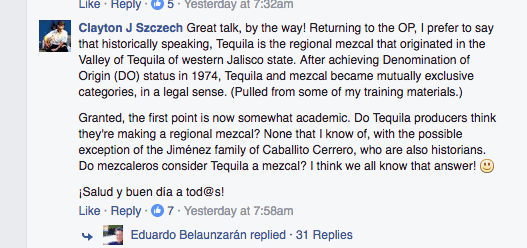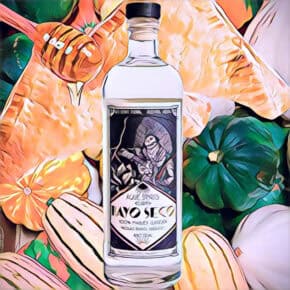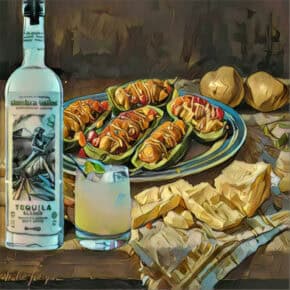You’re asking the wrong question
It may be trite but we always say tequila is a type of mezcal because it has the merit of being true. The term “mezcal” means anything distilled from agave, tequila is distilled from agave ergo it’s a mezcal. Simple right? Sure, as far as it goes with exact taxonomies it is true but if we’re honest with ourselves it’s also clear that tequila is a truly distinct type of mezcal.
The metaphor I always use is wine because anything fermented from grapes is wine. That’s generally accepted, right? In that metaphor tequila is like a chardonnay made in Burgundy called Chablis whereas a Michoacan tequiliana mezcal is like a Meursault, a chardonnay made in a sub-region of Burgundy.
In Europe wines with unique histories get different names based on where they’re made or something distinct from their past. We accept that everywhere else in life, why not with agave spirits? The root of that argument is in all those ‘tequila’s smoky cousin’ comparisons. People hate diminutives, especially when they’re fans of something so mezcal people developed a chip on their shoulder and still haven’t managed to completely get rid of it. It’s high time we all did because the stories of mezcals across Mexico are just too interesting and revealing to be fought over like political footballs.
A quick look at tequila
Take tequila, it seems like it developed from a confluence of demand for spirits in the mining industry just as large land holdings called haciendas figured out the supply problem. This all happened in Western Mexico sometime after the Spanish crown banned local Mexican spirit production in the 17th Century. That ban destroyed most of the other local spirits like the coconut distillate made in Colima which may have been the original Mexican distillate.
But some of the big mezcal producers carved out an exception for themselves. It’s not exactly clear what happened but they cut a deal with the Spanish crown and started the road towards tequila whether it was called that at the time or not. These spirits were made from agaves of mixed varieties and, at least to start, were roasted underground. Many of these producers were focused on technological innovations, they brought in trains to get their products to market faster, and applied the same attitude to their distillates with things like steam cooking and by exerting more control over the distillation process.
The question of how these production changes altered the flavor of the local mezcal is difficult to pin down. What we do know is that these producers with surnames like Cuervo called their innovative spirits “Vino de mezcal de Tequila” which means “mezcal wine from the town of Tequila,” mostly because wine was the easiest and most colloquial way of describing what they were up to. (see, there really is nothing new under the sun!). When they broke through with the 1893 World’s Fair in Chicago it certainly seems like tequila was well on the way to a distinct flavor which was only increasingly more well defined through the 20th Century.
Meanwhile people continued to roast agave hearts underground and distill them in tiny stills made from whatever was handy or in their tradition. The vast underground world of mezcal was defined by the shadow of tequila and remained that way until relatively recently. All the great discoveries of Raicillas, Tuxcas, Tepes, and the many other distilling traditions in Jalisco – in many cases just an hour from major tequila producing areas – testify to the amazingly active, inventive, and persistent distilling traditions in Mexico. If producers like those for Venenosa Raicilla and Balancan’s Tuxca, to mention just two being imported into the US, can produce such amazing spirits in the shadow of tequila, then just imagine what else was happening across Mexico.
As time passed many things about mezcal remained trapped in amber providing an incredible picture of the way things used to be done. Since no one cared it wasn’t worth much money and didn’t receive any investment except for bursts of demand during Prohibition and WWII.

Tequila really is its own thing – but what, exactly?
So, tequila really is quite distinct. It started down that path two hundred years ago, give or take, and has just kept right on going. But a funny thing is happening now, the highly evolved world of tequila seems to be exploding just as it reached the apotheosis of its critical flavors. The major branding and production definition sealed into law and then pursued aggressively by the CRT in the ensuing decades put the idea of 100% blue agave forward as the main definition of the spirit. It’s easy to remember for consumers and leaves producers wide latitude for how and where they produce let alone what the final product tastes like.
Tequila today means equally, high end bottles of pure agave, mid range bottles of pure agave, cocktail fodder, pure agave produced by diffusers, and all those mixtos. It’s made from Western Mexico all they way across the country to Tamaulipas on the Gulf of Mexico. And it’s incredibly valuable. It’s the spirit in the United State’s – if not the world’s – favorite cocktail and racks up billions in sales annually. You don’t get to be that big without some compromises.
So, the question may actually be, ‘what is tequila?’ especially since we’re starting to see a profusion of agave spirits that are changing the tradition and asking that exact question. There are bottles like Dos Volcanes and Luna’s Tequilana that are made just like tequilas but outside of the appellation. Then there are certified tequilas like Fortaleza, Calle 23’s Criollo, and the Siembra line that all tweak the classic production formulas. Hell, when Patron feels compelled to release Roca Patron, you know something is afoot. And then there’s Caballito Cerrero which is made just like traditional tequilas but doesn’t want the name.
This profusion of experiments is fantastic for all of us drinkers but despite all the nuances, one thing remains constant, they all taste like tequilas. Simply put, tequila people love one set of flavors, mezcal people another. It’s not completely different but the gap is far enough apart that we should take it more seriously.
Here’s why
It’s simple, really, and you know the answer already. The taste of mezcal is different from tequila. It’s open to be redefined by agave, region, or production type whereas tequila really has cranked that down to steam cooking blue agaves which give you a pretty narrow flavor set. Really, I think it’s that simple. I’m happy to debate it. Happy to learn more. Have at it!














Why of all the great authentically made tequilas and mezcals would you put Clooney’s Casamigos picture for this article?
Hi Ralph, Thanks for the comment. I chose that photo for this article because it speaks to the position that tequila has taken as an industry. I will definitely be writing more about other distinctive brands and personalities in the industry so look out for those articles in the near future.
Eloquently put! Thank you for the great read and new information. Many questions have also popped up and Hopefully you can help me answer them. Will email you soon. Thank you very much
Hi Joe,
Thanks for the compliment. I’m glad that you enjoyed the article and will answer your questions as best I can.
Max
Not sure you make an argument at all that tequila isn’t mezcal. They all come from agave, sure there are varying methods of production and use of various agaves. It’s like saying bourbon isn’t whiskey, or Scotch isn’t whiskey, they both use grains though and are aged in wood barrels. Yes, we are getting deviations with all the gimmick whiskeys that are are aged at sea, or compressed with air in barrels to age faster, but they are still whiskeys just as tequila is still a mezcal. Try again.
Hi Leon,
I’m pretty sure that we’re talking past each other because I wrote “we always say tequila is a type of mezcal because it has the merit of being true. The term “mezcal” means anything distilled from agave, tequila is distilled from agave ergo it’s a mezcal. Simple right? Sure, as far as it goes with exact taxonomies it is true but if we’re honest with ourselves it’s also clear that tequila is a truly distinct type of mezcal.” which is pretty much the opposite of what you’re saying, right?
Max
I had to comeback to this article because it was very interesting and sparked new questions. I’ve been trying to find out information of how the “modern” tequila became to be. With technological advances and inventions. I’ve scoured through the internet with no leads. If there is any publications or website that would help understand the history more, it would be much appreciated. Salud! Feliz Navidad
Hi Joe,
Thanks for the note. Ian Chadwick published some interesting research on tequila’s history here http://www.ianchadwick.com/tequila/ and there are a few other sources. Your best bet is to search for specific terms and dig through as many Google pages as possible to get to what’s out there. I’ve heard that a new book will be coming out in the future that should shed much light on this topic. We’ll definitely report on that when it happens so stay tuned.
Max